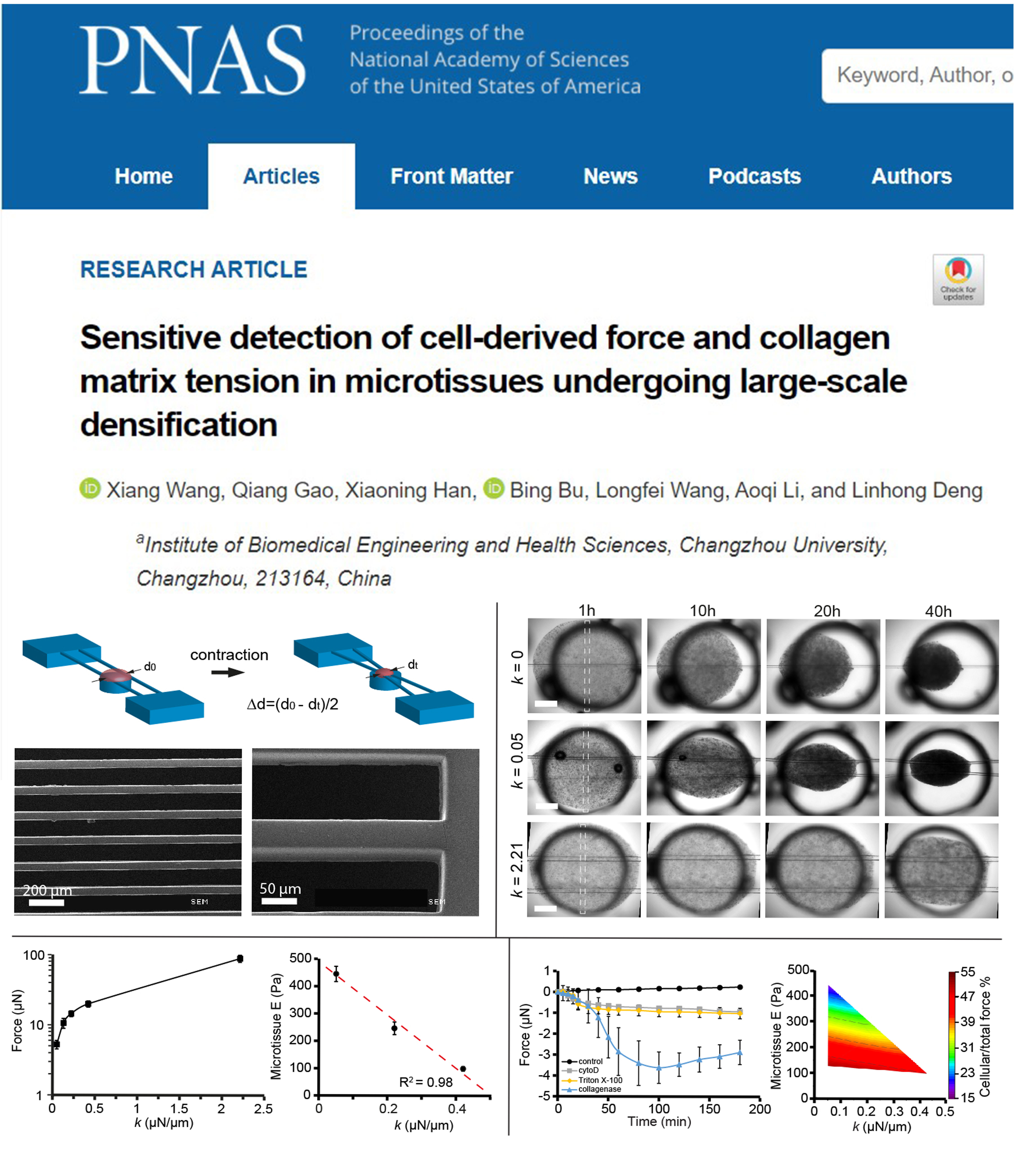Prof. Deng Linhong: A Breakthrough in Developing Novel Force Detector to Reveal Dynamic Cell and Matrix Force Generation
发布时间: 2021-09-07 访问次数: 489
Mechanical forces play unique roles in establishing and remodeling tissue morphology during physio/pathological processes such as embryonic development and wound heal, which has become an international research hot-spot in recent years. However, the dynamic change of cell-derived force during large-scale remodeling of soft tissue is still unknown, mainly because there is lack of force detector that is highly sensitive yet produces no interfering feedback force on the cells during measurement. To overcome this challenge, a team led by Professor Deng Linhong, Director of the Institute of Biomedical Engineering and Health Sciences (iBMEHS) of Changzhou University, develops a novel force detector based on highly stretchable polymer microstrings on which a microtissue of fibroblasts in collagen was culured. Using this technique, the force generation by cells and extracellular matrix in the microtissue can be measured in real-time during large-scale denificationof the microtissue.


Experimental results demonstrate that the contraction force of microtissue was negatively correlated with their mechanical boundary conditions, and the contractility required to maintain deformation varied greatly in different boundary conditions. Meanwhile, the study confirms that the microtissue mechanics simultaneously consists of active cellular force and resting ECM tension. When the microtissue stiffness was below 500 Pa the proportion of cellular contribution to the total force generation decreased as the microtissue stiffness increased. It indicates a dynamic shift of contributions to force generation between cells and ECM during soft tissue densification which is affected by the boundary conditions. This study provides a further understanding of mechanical mechanisms associated with the development and maintenance of soft tissue, but may also be helpful to establish comprehensive design principles in the development of scaffold biomaterials and injectable hydrogels for tissue engineering and regenerative medicine. These new findings are now published online in The Proceedings of the National Academy of Sciences (PNAS), which is the first research paper published in this journal with CZU as the sole affiliation institution.
PNAS is one of the world's most prestigious academic journals in the field of basic science, together with Nature, Science, and Cell to be known as the four major international academic journals. Of this paper, the lead and co-corresponding author is Prof. Wang Xiang who returned from abroad to join Deng’s team at the end of 2018 and promoted as a Distinguished Professor of Jiangsu in 2020, the co-first author is Gao Qiang who was then a master degree graduate student in class-2018 of iBMEHS and School of Pharmacy, other contributing authors, Drs. Han Xiaoning, Bu Bing are Lecturers and Lei Lei is Lab Technician of iBMEHS, Wang Longfei, and Li Aoqi is a undergraduate, and master degree postgraduate student, respectively, of iBMEHS, the senior co-corresponding author is Prof. Deng Linhong. The study was supported by the grants from the National Natural Science Foundation of China, the Department of Science and Technology, and the Department of Education of Jiangsu Province.

Original paper links: https://www.pnas.org/content/118/36/e2106061118